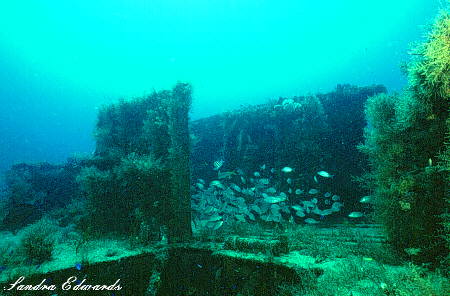|
There's something different about diving on shipwrecks.
If you travel around the world, there are a few wrecks in particular, that can
change diving for you...they seem to evoke an imaginative process, one which has
you pondering the last moments of the struggling ship, imagining the 30 foot
waves, the heroic efforts, and the last plunge to the bottom.
When
you get certified, you learn the academics, the logic, the skills, and you learn
to block out the magic and the heart pounding fear caused by unseen terrors and
monsters of the deep. And far to often, when this happens, we lose this majic,
and the sense of wonder and adventure we once had as children. So for this issue, we'd like to ask you to think back to when the
underwater world first became exciting for you. There's a good chance you'll
remember being at a TV set or movie as a child, and watching some "action
hero" penetrate the dark shape of a sunken wreck. As the lone adventurere
dodged 12 foot moray eels, evaded a huge, man-eating octopus, and of course
bravely warded off the advance of marauding sharks, his spirit of adventure
captivated us. Watching this man, we new that we too would someday search for
high adventure. We new that the ocean world was calling us, and its unseen
treasures and fantastic shapes and life forms were waitng for us to make
contact.
|
And there are some dive sites that can help reawaken
this
sleeping adventurer, which still lives inside us. To help you find this "sleeper",
we will start with a real shipwreck---a huge freighter which was caught in a
hurricaine over 20 years ago, and destroyed. So powerful was this storm, the
ship first lost the ability to control its frantic rush to the Palm Beach
Inlet, the only haven from this great storm, and with less than a mile more to
go before protection, the ship was blown right up against the shallow
shoreline reef on Singer Island. The crew huddled in terror all night long,
with 20 foot breakers pummeling the great ship, and making any attempt at
abandoning, obvious suicide. When morning came, the ship had managed to remain
intact, and the Coast Guard was able to rescue the desparate crew. The great
ship, known as the Amaryllis, would rest there in front of the Rutledge Inn, for
the next six moths, untill finally being dragged into deeper water where it now
lies.
Today the Amaryllis is one of Florida's most
spectacular shipwrecks, not just because of its past, but because of the
tremendous life that can be found on it. |



